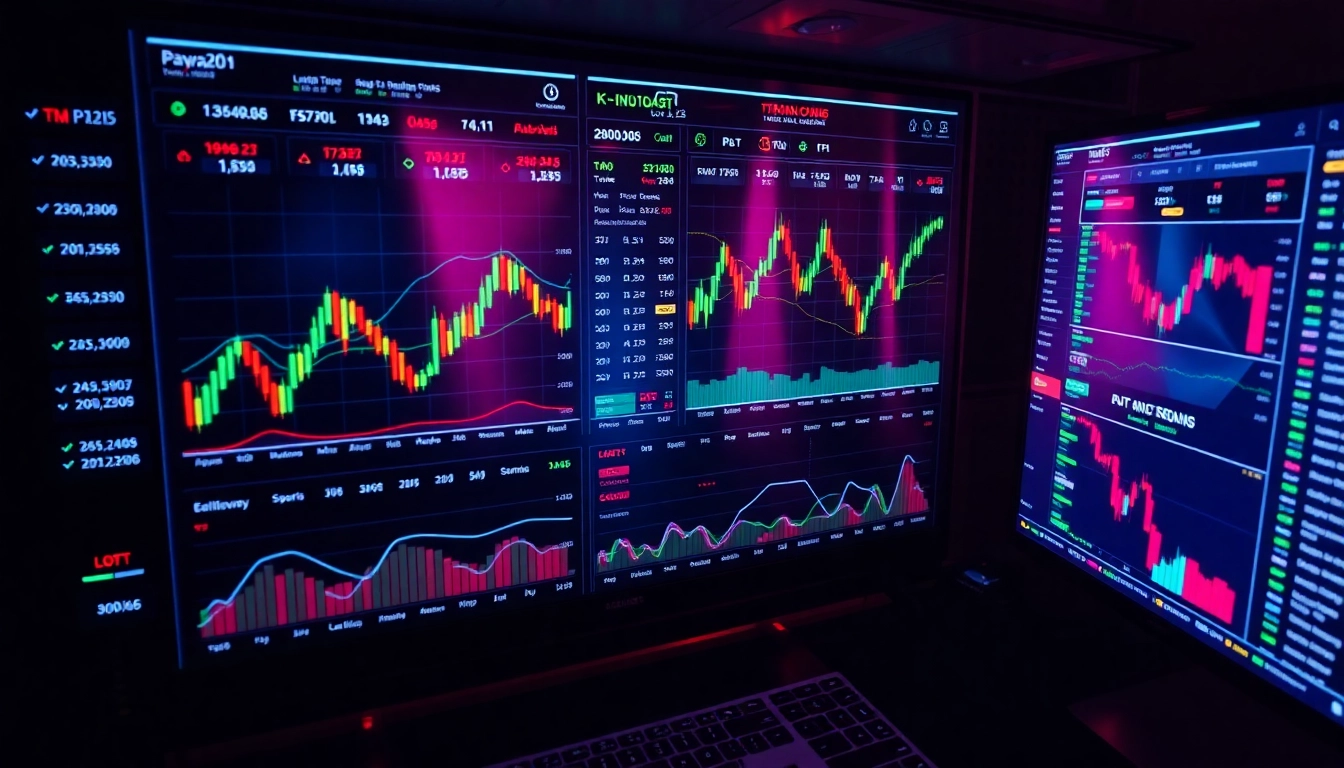In the dynamic world of financial markets, having access to reliable, comprehensive, and real-time data is essential for traders and investors seeking success. Among the myriad of tools available today, trading view stands out as a leading platform that combines advanced charting, social interaction, and market analysis. Whether you’re a novice looking to learn or a seasoned trader optimizing your strategies, understanding the features, benefits, and best practices of TradingView can significantly elevate your market analysis capabilities.
Understanding Trading View: Features and Benefits
Overview of Trading View’s Core Tools
TradingView is renowned for its extensive suite of core tools that cater to every aspect of market analysis. Its hallmark is a highly customizable charting platform that allows traders to visualize data across multiple asset classes—including stocks, cryptocurrencies, forex, commodities, and indices—in real-time. The platform supports a broad spectrum of technical indicators, drawing tools, and scripting capabilities via Pine Script, empowering users to build custom strategies and automate analysis.
Beyond charting, TradingView offers an integrated social network where users share ideas, strategies, and market insights. This collaborative aspect fosters collective intelligence, enabling traders to learn from each other’s experiences. The platform also features robust screening tools, alert systems, and data feeds that keep traders informed of market movements as they happen.
How Trading View Elevates Market Analysis
By integrating multiple tools into a single interface, TradingView simplifies complex market analysis. The platform’s advanced charting features, such as multiple timeframes, overlay comparisons, and pattern recognition, help traders identify trend reversals, continuations, and breakout points with precision. Its social aspect allows for peer validation and idea sharing, which can confirm or challenge individual analyses, adding a layer of community-driven due diligence.
Moreover, TradingView’s ability to connect with various brokerage accounts enables users to execute trades directly from charts, bridging analysis and execution seamlessly. Its cloud-based infrastructure ensures access from any device, enhancing flexibility and responsiveness.
Comparing Trading View with Other Platforms
While platforms like MetaTrader, Thinkorswim, or Webull also offer charting and trading features, TradingView’s unique value lies in its extensive asset coverage, superior customization, and active trading community. Its user-friendly interface and social functionalities make it particularly appealing for traders who value collaboration and shared insights. Additionally, its scripting capabilities surpass many competitors, allowing for sophisticated, bespoke indicators and strategies.
Getting Started with Trading View
Creating an Account and Navigating the Interface
Getting started is straightforward. Sign up on the TradingView website or download the mobile app. Once registered, you gain access to a customizable dashboard where you can set up multiple charts, watchlists, and alerts. Navigation is intuitive, with a sidebar for assets, indicators, and tools, and a main workspace to visualize data. The interface adapts to your trading style, whether you’re a scalper, swing trader, or long-term investor.
Customizing Charts and Watchlists for Better Insights
Customization is key to efficient analysis. Users can create personalized watchlists, grouping assets of interest, and apply preferred color schemes and chart types (candlestick, bar, line). Indicators such as Moving Averages, Bollinger Bands, Fibonacci retracements, and custom scripts can be layered for deeper insights. Saving chart templates allows for quick setups, ensuring consistent analysis across sessions.
Utilizing Alerts and Notifications Effectively
Alerts are vital for timely decision-making. TradingView allows setting alerts based on price levels, indicator crosses, or pattern formations. These notifications can be sent via email, SMS, or app push notifications, ensuring traders never miss crucial moves. Effective use involves aligning alerts with your trading plan to reduce noise and focus on actionable events.
Advanced Trading Strategies Using Trading View
Technical Analysis and Pattern Recognition
TradingView excels in facilitating technical analysis through its array of tools. Pattern recognition features, such as head and shoulders, double tops/bottoms, and symmetry patterns, help traders anticipate market shifts. Automation via Pine Script enables custom strategies where scripts scan for specific setups, signaling potential entries and exits based on historical success metrics.
Leveraging Community Ideas for Market Predictions
The community ideas section is a treasure trove for learning and validation. Traders upload their analyses, charts, and forecasts, often with detailed commentary. Analyzing these ideas provides insights into market sentiment and diverse viewpoints, supplementing one’s own analysis. Followers can comment, challenge, or endorse ideas, creating an interactive learning environment.
Integrating Trading View with Trading Platforms
Direct integration with select brokers allows traders to execute trades directly from charts, reducing latency and streamlining workflow. This integration also enables backtesting strategies in real-market conditions, allowing for iterative improvements. Ensuring compatibility and understanding platform-specific features are crucial for a seamless trading experience.
Optimizing Your Trading View Experience for Better Results
Utilizing Data-Driven Indicators and Scripts
Leveraging custom indicators and scripts tailors analysis to your trading style. Pine Script’s flexibility means you can develop indicators tailored to specific asset classes or trading signals, such as volatility bands or unique momentum oscillators. Regularly updating and refining scripts based on market conditions enhances predictive power.
Managing Risk with Real-Time Alerts and Analytics
Risk management is integral to trading success. Setting alerts for stop-loss, take-profit, or volatility spikes helps mitigate losses. Combining real-time analytics with your risk parameters ensures proactive adjustments rather than reactive decisions, improving overall profitability.
Implementing Consistent Trading Strategies with Insights
Consistency stems from disciplined execution of well-tested strategies. Documenting trade setups, analyzing win/loss ratios, and adjusting based on performance metrics are best practices. TradingView’s detailed chart history and analytics facilitate this ongoing refinement process, leading to more disciplined and effective trading routines.
Tracking Performance and Growing Your Trading Skills
Analyzing Past Trades and Improving Techniques
Post-trade analysis is vital. Using TradingView’s comprehensive historical data, traders can evaluate their decisions, identify patterns in success or failure, and fine-tune strategies accordingly. Journaling trades with contextual notes enhances understanding of psychological biases and decision-making patterns.
Using Trading View to Stay Ahead of Market Trends
Constant market surveillance via customized alerts and community insights helps traders remain ahead of trends. Following influential traders, participating in webinars, and exploring trending ideas broadens market perspective and sharpens anticipatory skills.
Continuous Learning Through Community and Resources
Engagement with the thriving TradingView community, alongside tutorials, webinars, and educational content, supports ongoing learning. Consistent skill development and adaptation to evolving market conditions ensure long-term success.









